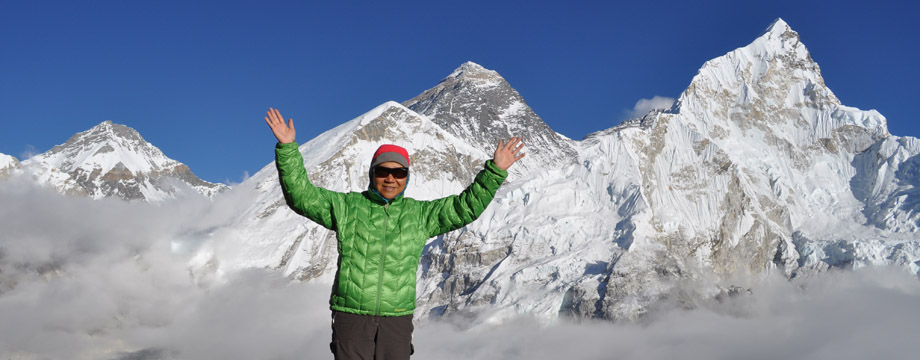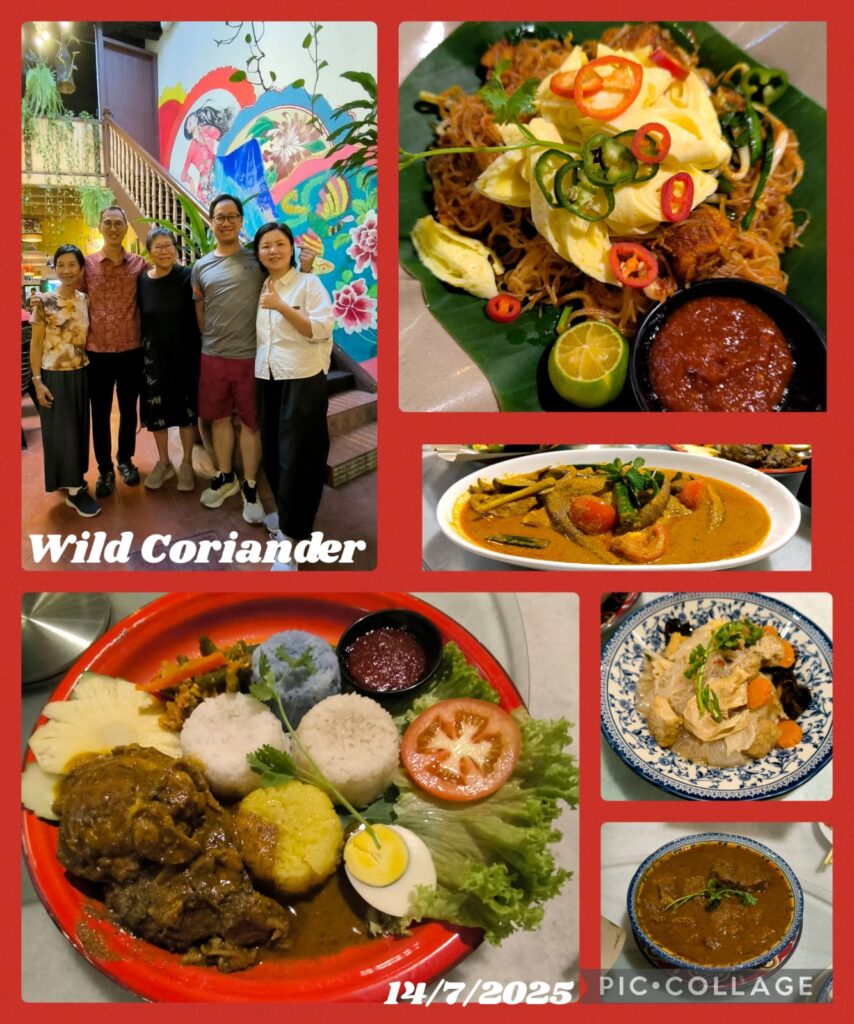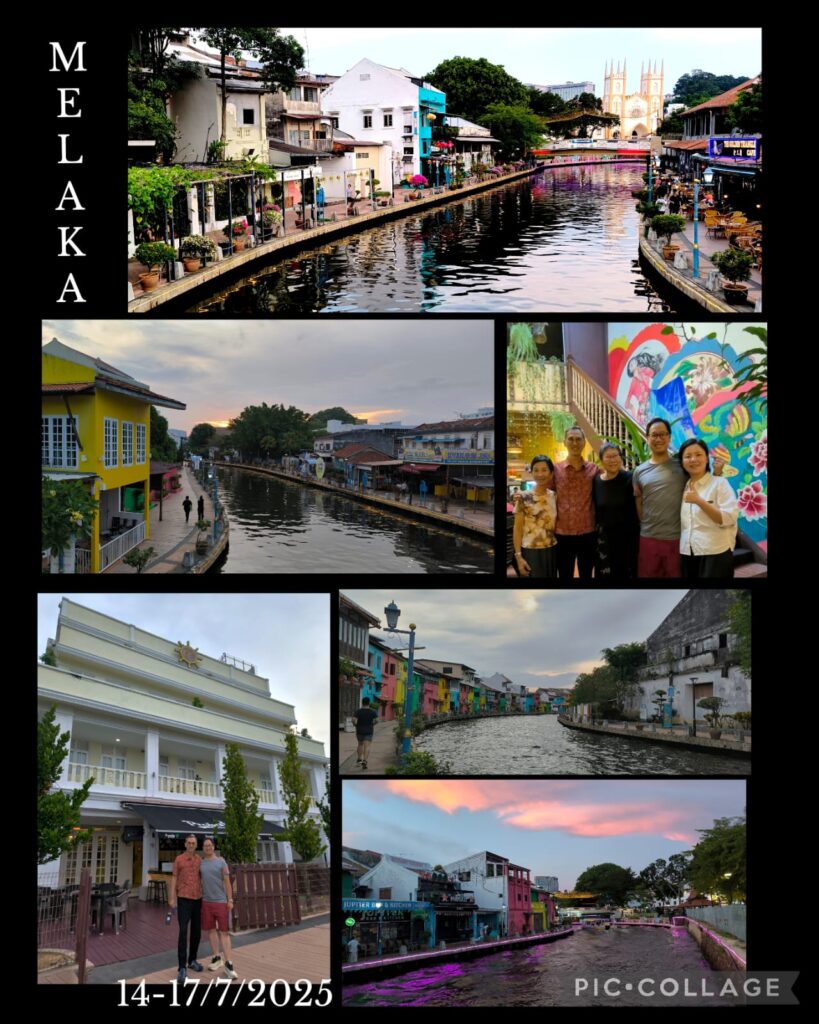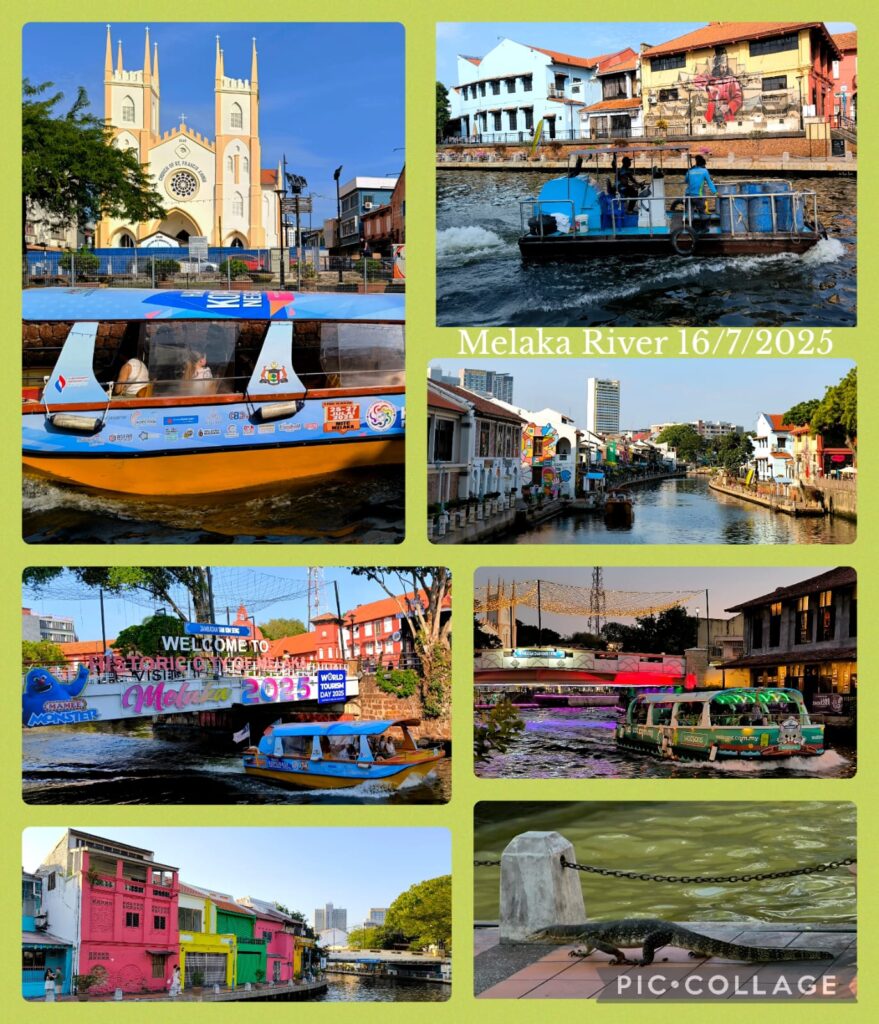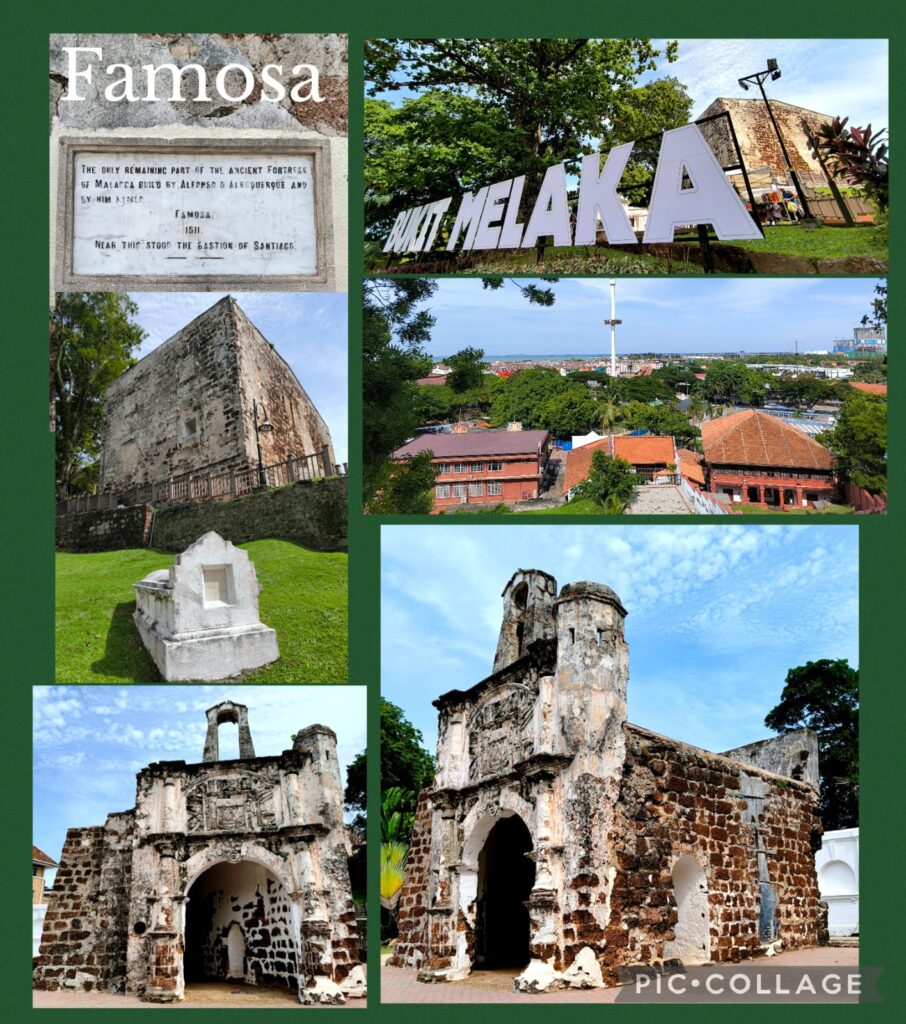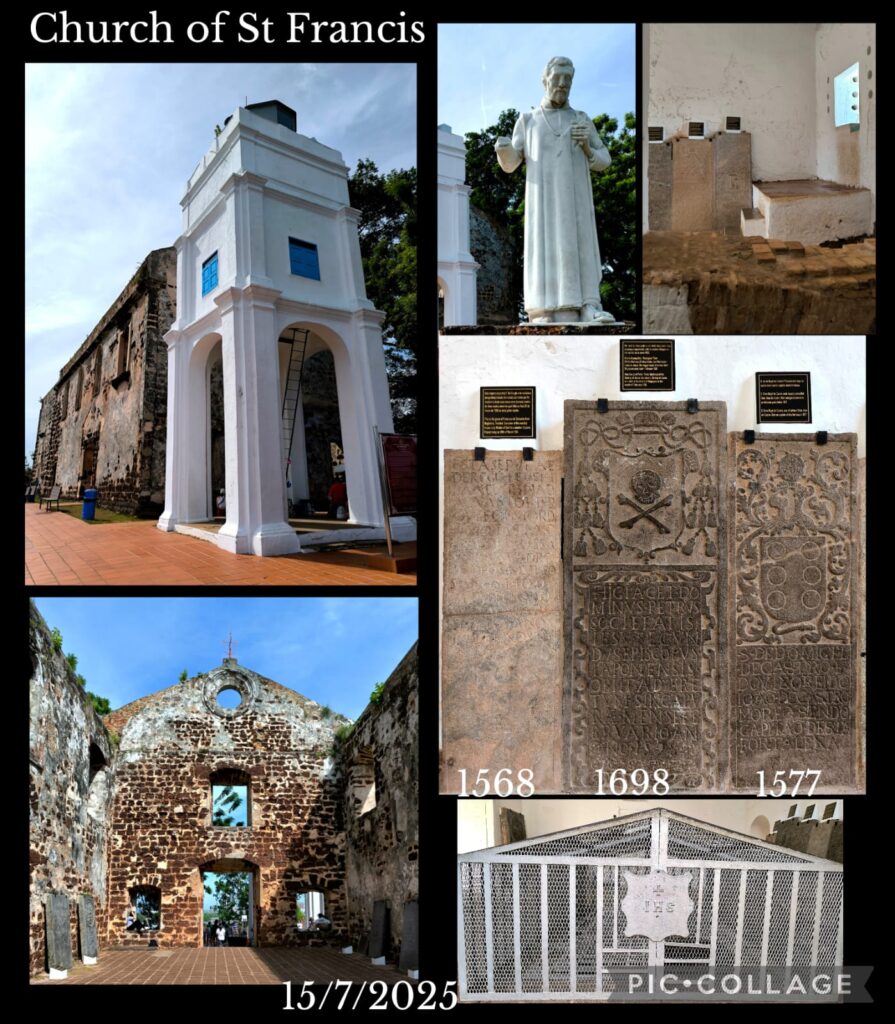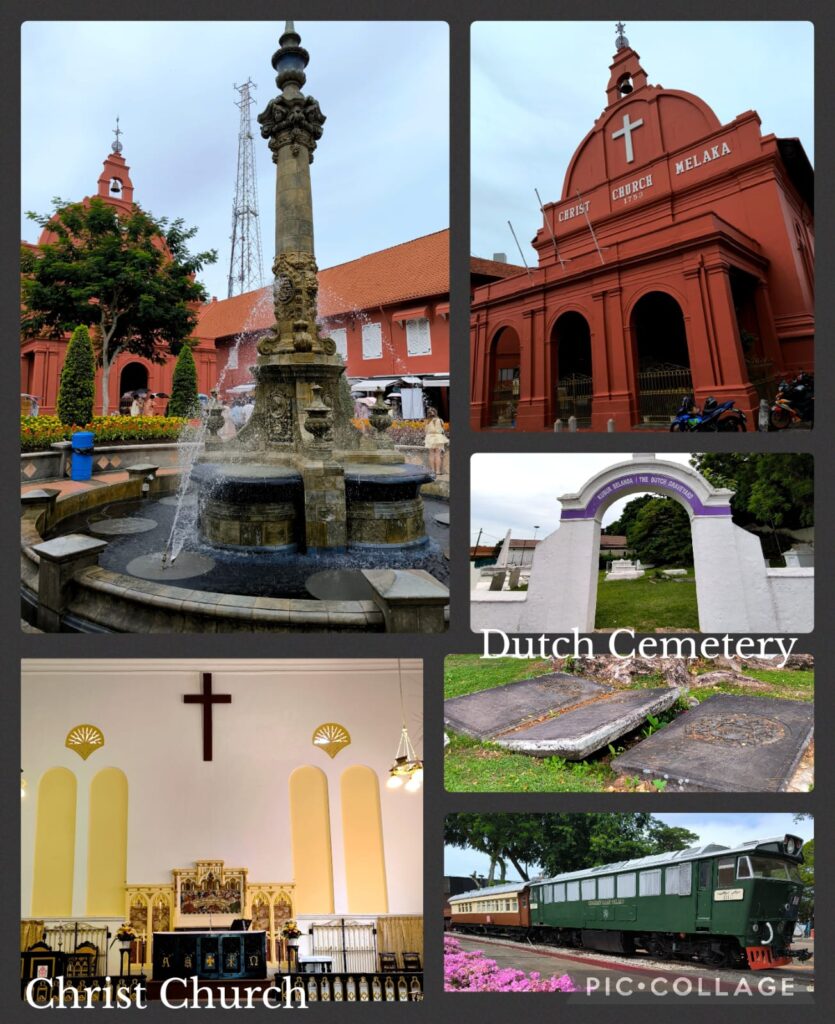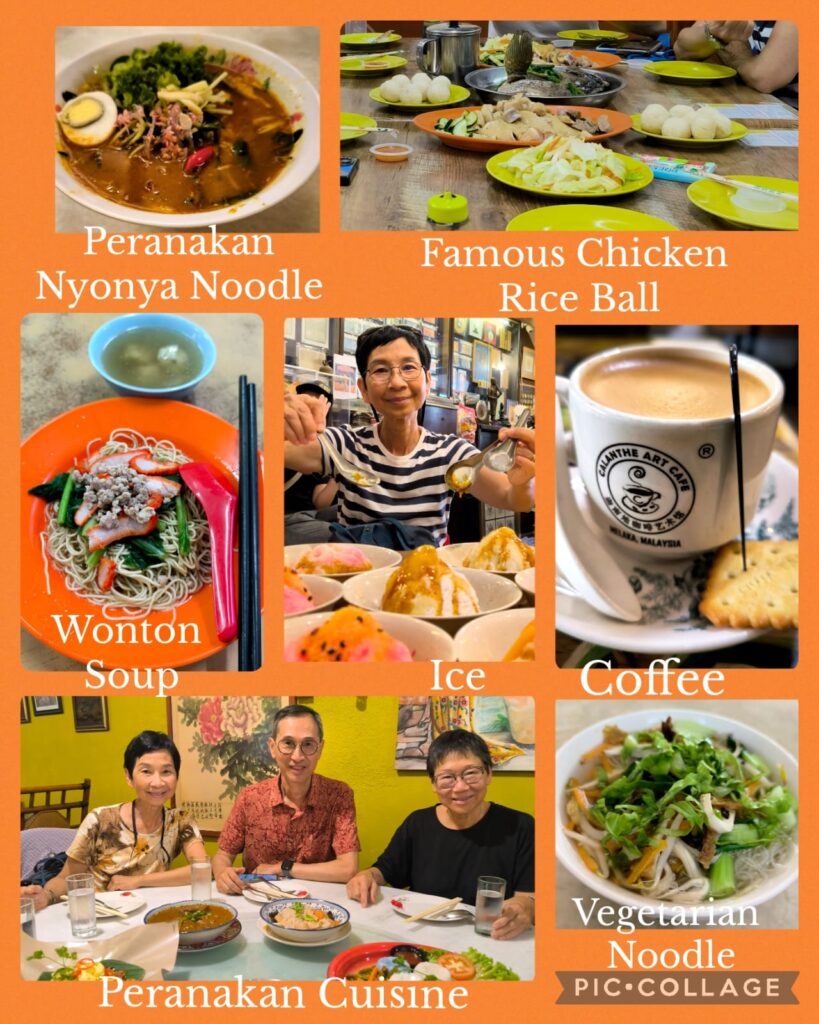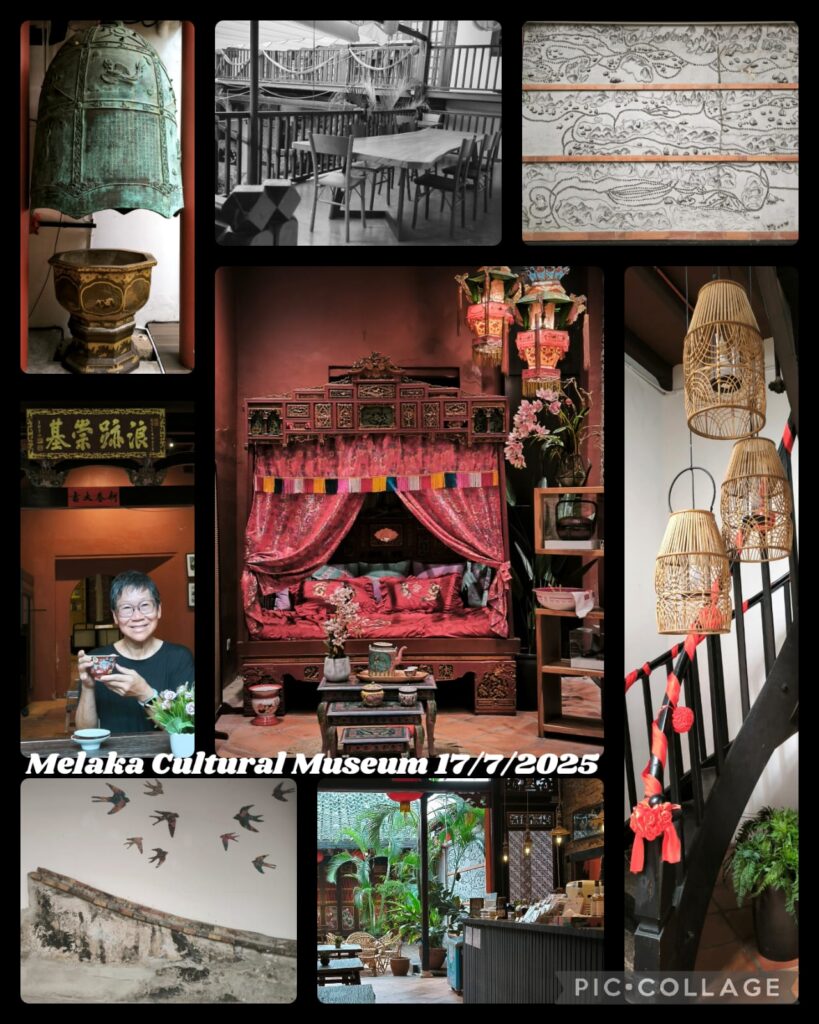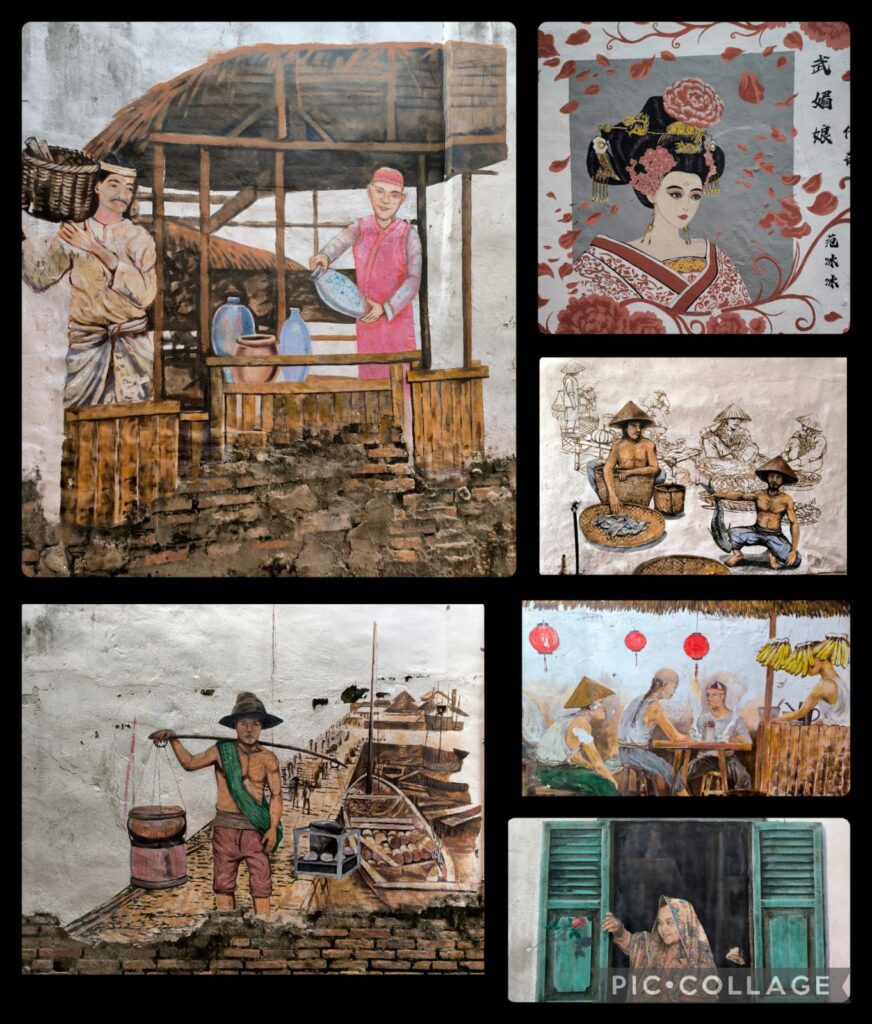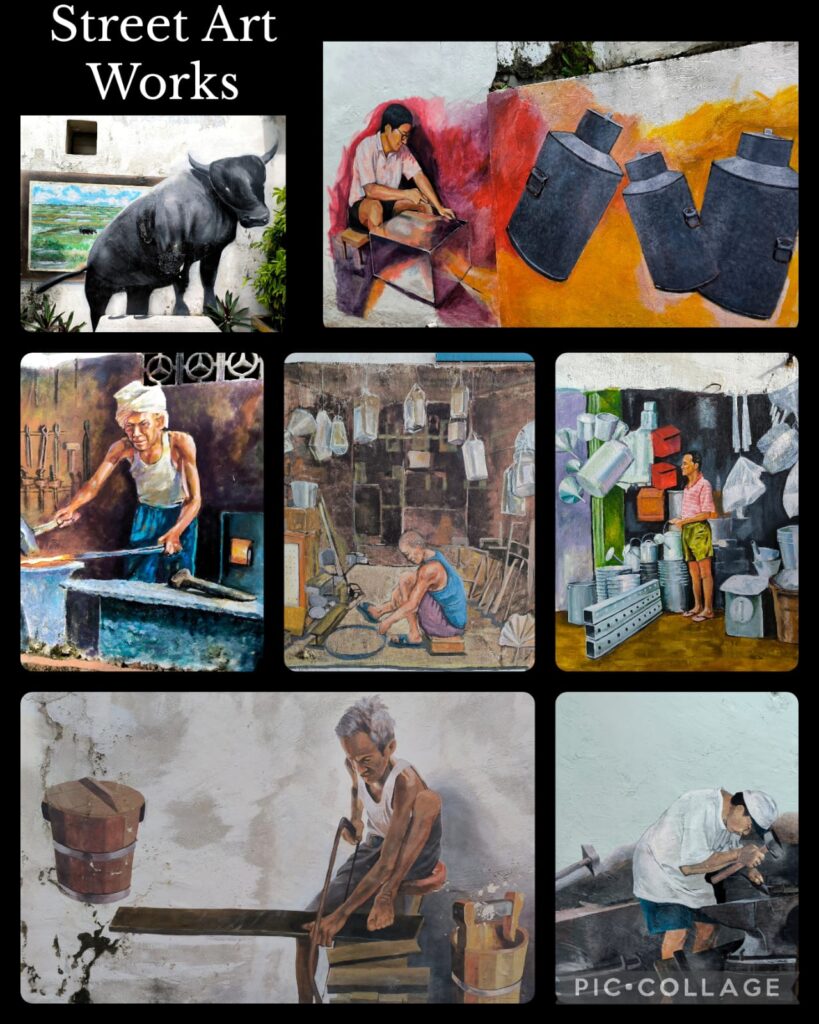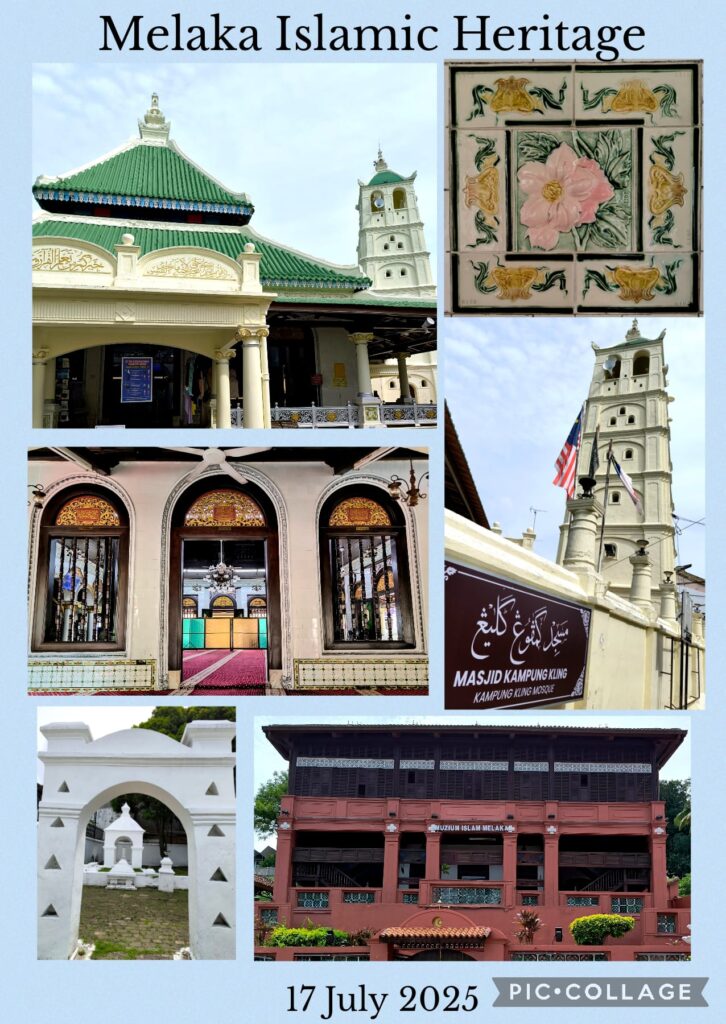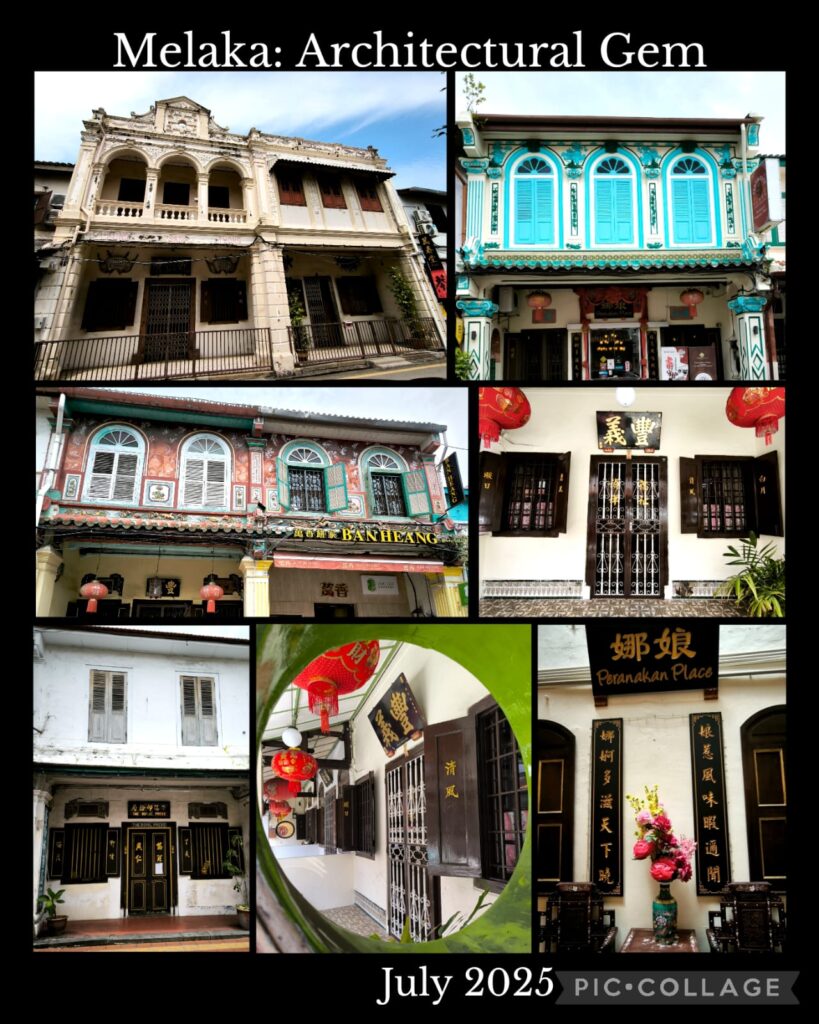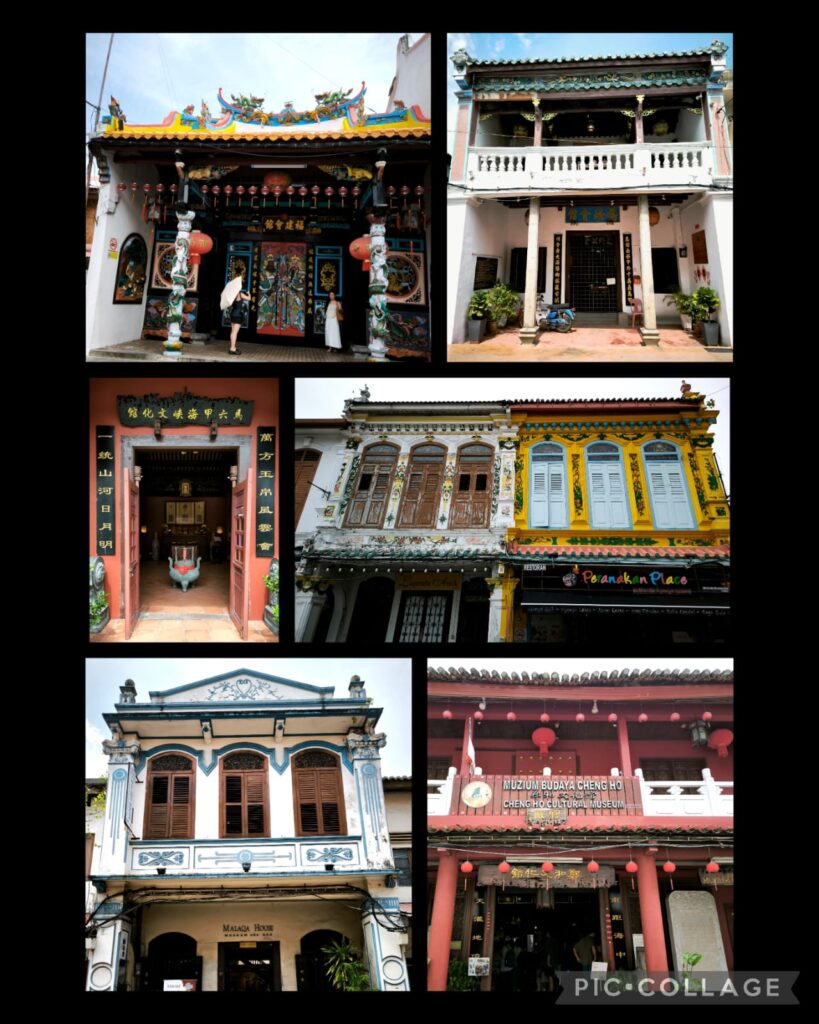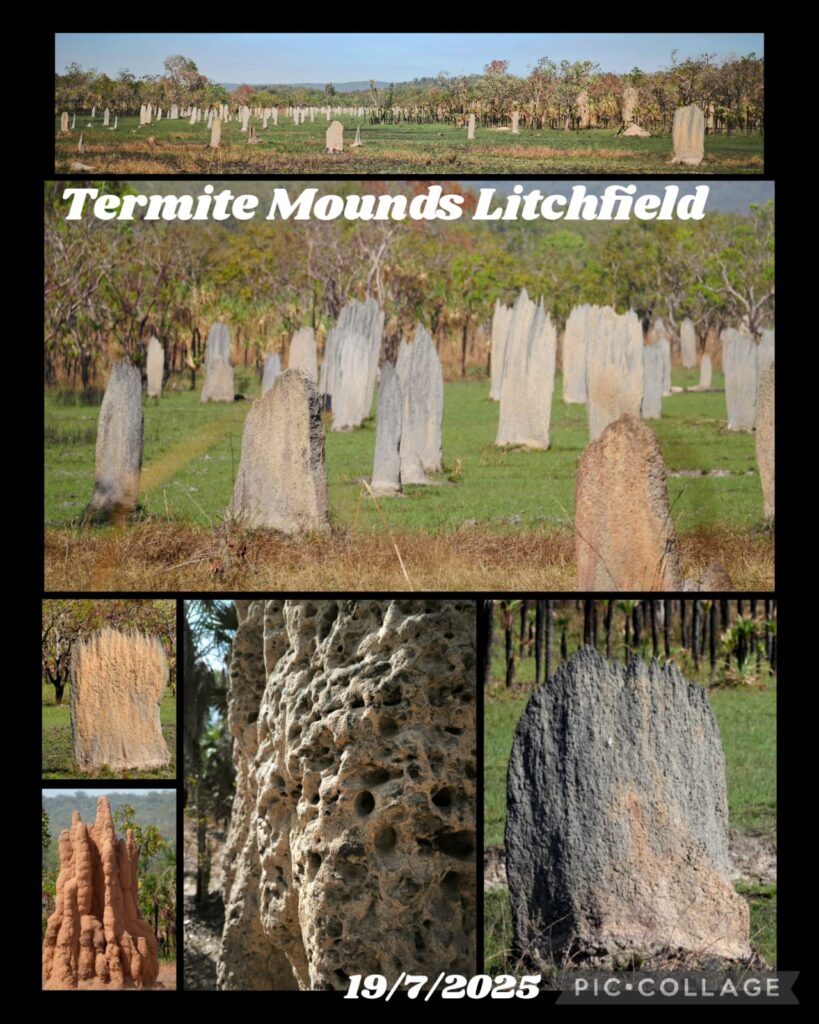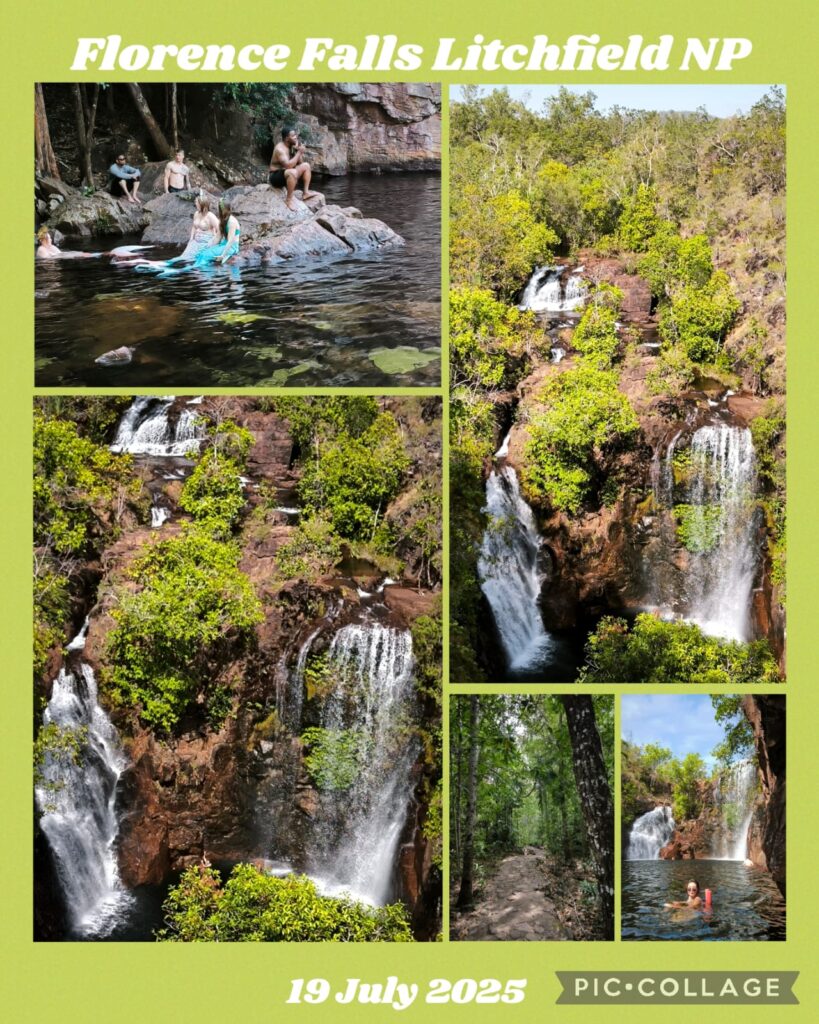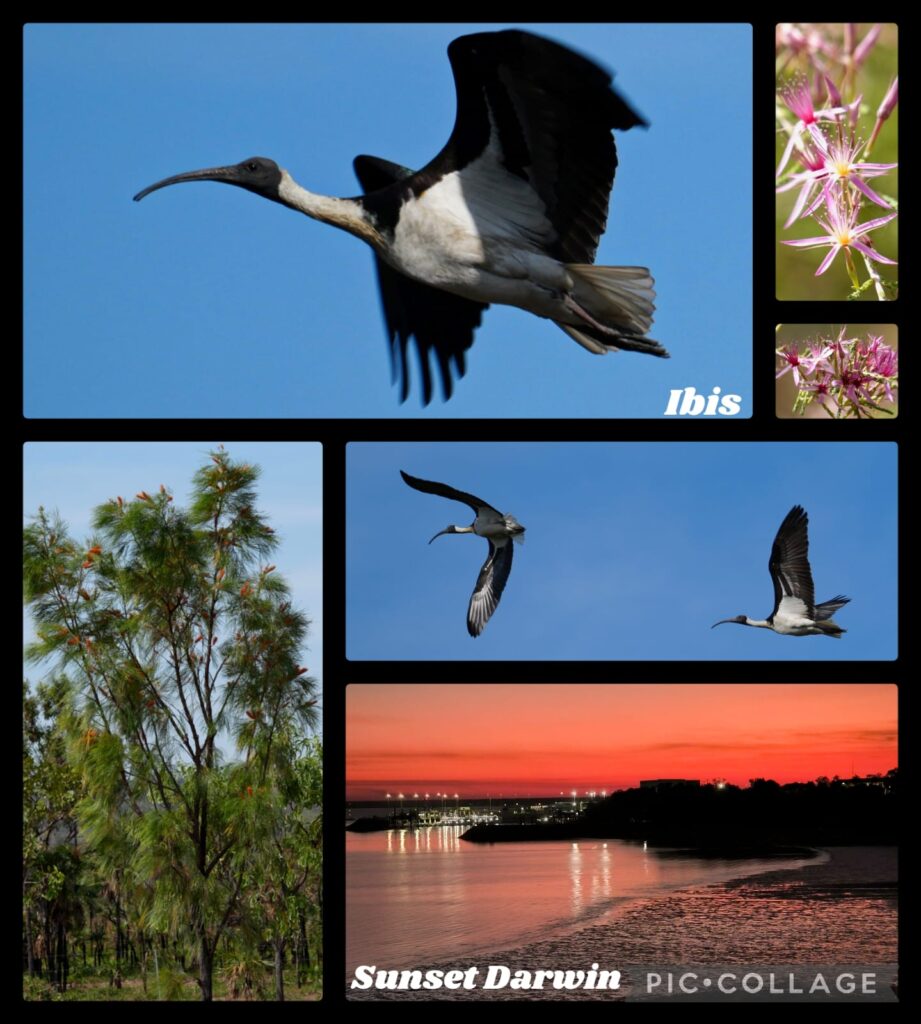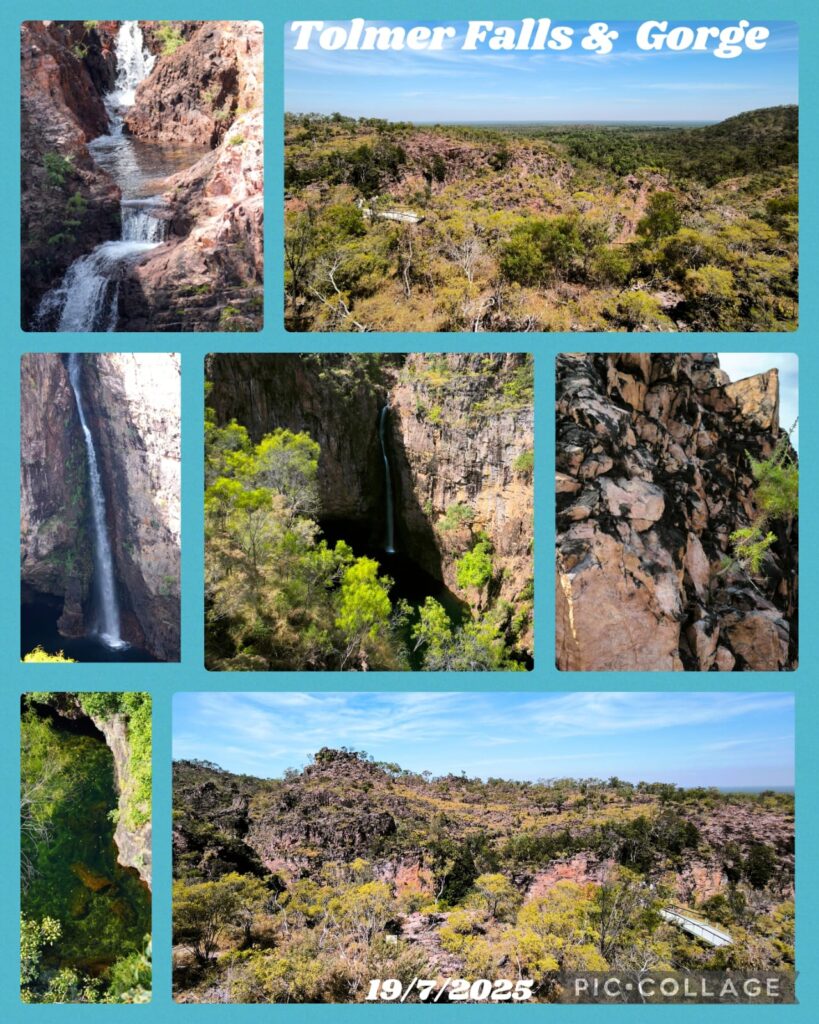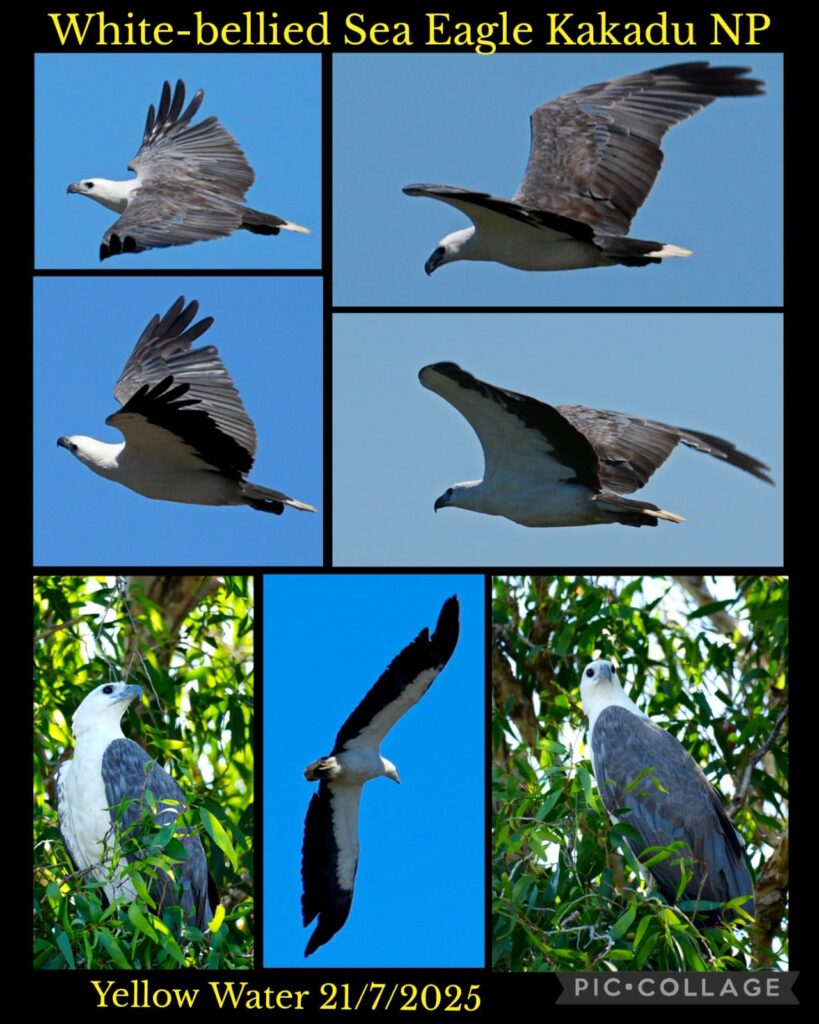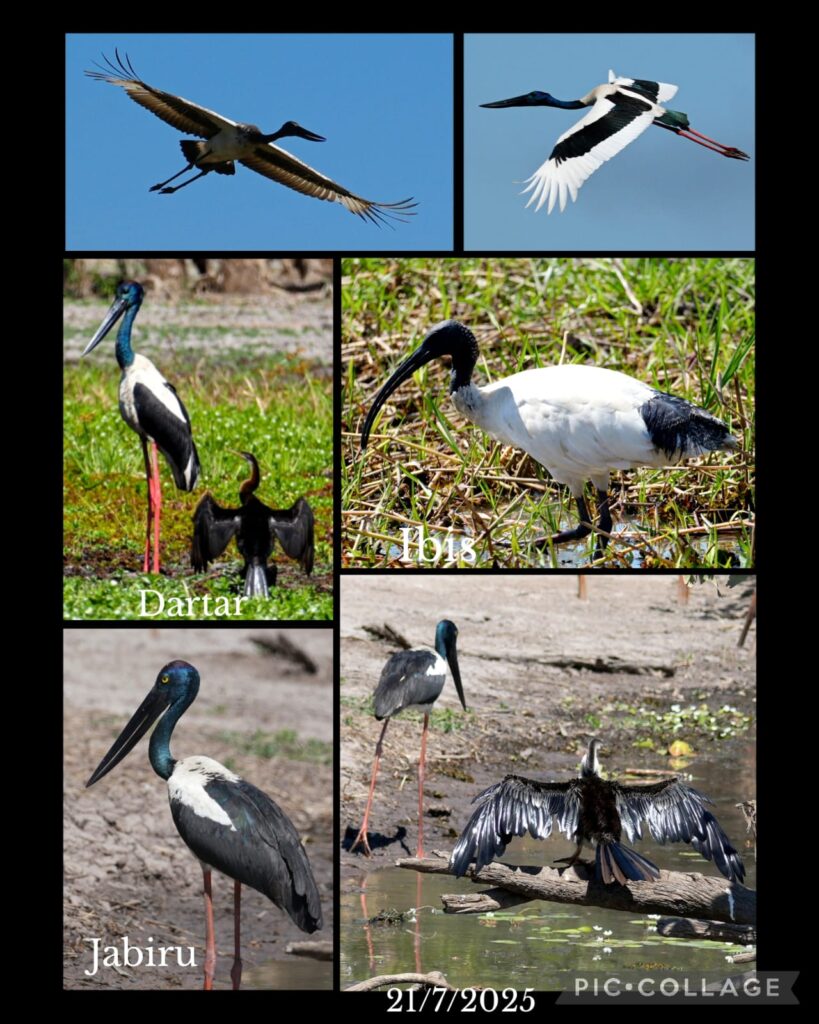Background
I planned to go to Sydney in August to celebrate the birthday of Alan, my elder brother. By chance, I was able to add three side trips including a brief visit to Melaka, Malaysia on my way to Darwin, an expedition to the iconic Kimberley coast on Le Soleal (Darwin-Darwin), and a journey on The Ghan from Darwin to Adelaide.
Melaka – Darwin July 14 – 21, 2025
July 14 – 17 Melaka (Malacca) Malaysia
My first visit to Malaysia was in the summer of 1978 when I travelled from Penang to Melaka (used to be called Malacca). Melaka, the oldest Malaysian city on the Strait of Malacca, is my favourite Malaysian city. Melaka has been an important port along the maritime silk road: the first official Chinese trade envoy arrived in 1403 followed by Ming Admiral Zheng He (1371-1433) who visited Melaka five times. It has been culturally diverse, influenced by a history of ethnic, cultural and religious intermixing. It is home to ethnic communities such as Chinese, Malays, Indians and Peranakan Chinese. The old town has prominent Buddhist, Hindu, Islamic, Catholic and Protestant religious buildings. Rulers from the Sultanate, Portuguese, Dutch and British have all left their marks on the urban landscape. Today, the historical core of the old town along both sides of the Melaka River and centred around St Paul’s Hill which reflects the historical significance of the 15th century Malacca Sultanate as well as the subsequent Portuguese and Dutch Colonial periods with numerous landmark buildings/structures is a UNESCO World Heritage Sites.
July 14. I was able to revisit it when I discovered the most direct way to reach Darwin from Hong Kong was via Kuala Lumpur (KL). Then my brother Lawrence and his family (Sally, my sister-in-law, their son and daughter-in-law, Leuk and Isabel) were also planning a visit to Malaysia from July 5 to 17. A friend from Taiwan also joined our family trip: we ended up having a party of six. Lawrence hired a local driver, met me on arrival and we proceeded to Melaka which is about 150km south of KL. Unfortunately, there was a bad traffic accident on the highway and we were stuck for over an hour. We did not reach Melaka till 6pm. We were very hungry and went to the Wild Coriander, one of the most popular restaurants known for its food and ambience. We sampled six local dishes and had a most delicious dinner. We walked along the river enjoying the night scene before going to an AirBnB outside the old town where we stayed for two nights.
July 15. We spent the morning exploring the Melaka Hill which has a cluster of attractions including the Church of St. Francis Xavier and A Famosa (fortress). There are several museums but we did not have time to visit. We walked along the Jonker Street and had the famous Hainan Chicken rice balls for lunch. In the afternoon, we joined a guided tour to visit the Christ Church, the Dutch Graveyard and the ruin of St. Francis Xavier Church. We left the guided tour and visited a Portuguese village and a beach instead. We ended up having dinner in a Portuguese restaurant by the seaside.
July 16. We drove outside the city and found many unfinished buildings. It was too hot and we decided to have brunch in The Baboon Houses, which is a beautifully restored traditional house. I shared spaghetti and a full English breakfast with Leuk and Isabel. The food was delicious and beautifully presented. Around 1 pm, Lawrence, Sally, Leuk and Isabel left for Johor Bahru to visit friends while I preferred to spend one more night in Melaka. I moved to a hotel by the river and had a wonderful time exploring the old town leisurely.
July 17. I slept for 12 hour in a windowless and quiet room. In the morning, I wandered aimlessly in the old town visiting the Chinese, Islamic and Hindu temples, and tombs, looking at street art and the different architectural styles. Melaka is a living museum. At 3 pm, Lawrence and Sally returned to pick me up and we headed to the airport (Leuk and Isabel went to Singapore). They would leave for Kunming around 9 pm while I would depart at 6 am the following day for Darwin. I stayed at a hotel next to the airport till 3:30 am after a sleepless night. The Air Asia flight departed on time and I had a 5-hour flight to Darwin.
Remarks
I like Melaka for its authenticity, history and multi-culture. It has expanded a lot since my first visit in 1978 and spoilt as a result of over-tourism and commercialization. Nonetheless, I am glad to see tourists have revitalized the town with many old gorgeous charming traditional houses restored. Some of them are boutique hotels/guesthouses and eateries: I visited a few old houses, sat down to enjoy the ambience, sipped local coffee and sampled local cuisine for two days. It was a wonderful experience indeed. Melaka is a place worth spending a couple of days for visitors to Malaysia.
July 18 – August 18 Australia
July 18-21 Darwin
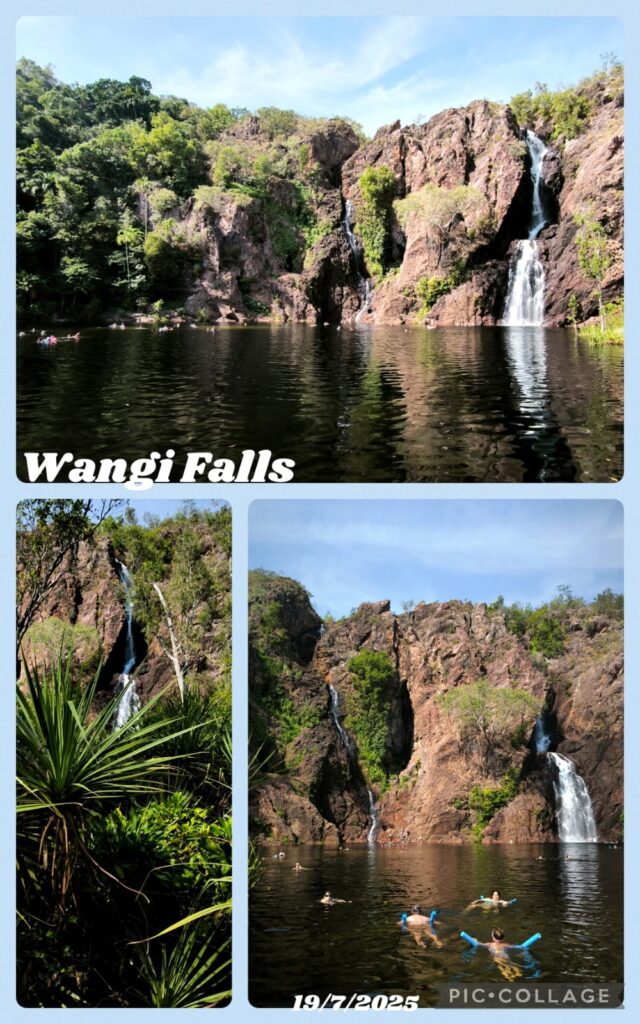
I visited Darwin three times while studying at the Griffith University in 2000-2001. I took this opportunity to visit the Kakadu National Park, Alice Spring, Uluru and Bungle Bungle. As the expedition on Ponant to the Kimberley coast would begin in Darwin, I returned for the fourth time. However it did not bother me as there was always things to do. Kylie, my cabinmate had never been to this part of Australia. Luckily we found a reasonable package with four nights’ accommodation in Hilton Double Tree, two day trips and a dinner at a waterfront restaurant.
July 18. I arrived in Darwin around 12:30pm. Kylie who flied in from Melbourne arrived shortly after 1 pm. We shared a taxi to Hilton Double Tree with an elderly coupon who were on the same flight from Melbourne. We had a leisure afternoon walking to the waterfront for dinner before having an early night.
July 19. We had a day trip to Litchfield National Park known for its waterfalls and waterholes. It is about an hour’s drive from Darwin. We stopped to look at enormous cathedral and magnetic termite mounts and had a nice simple lunch. I swam twice: in the Florence Falls in the morning and the Wangi Falls in the afternoon.
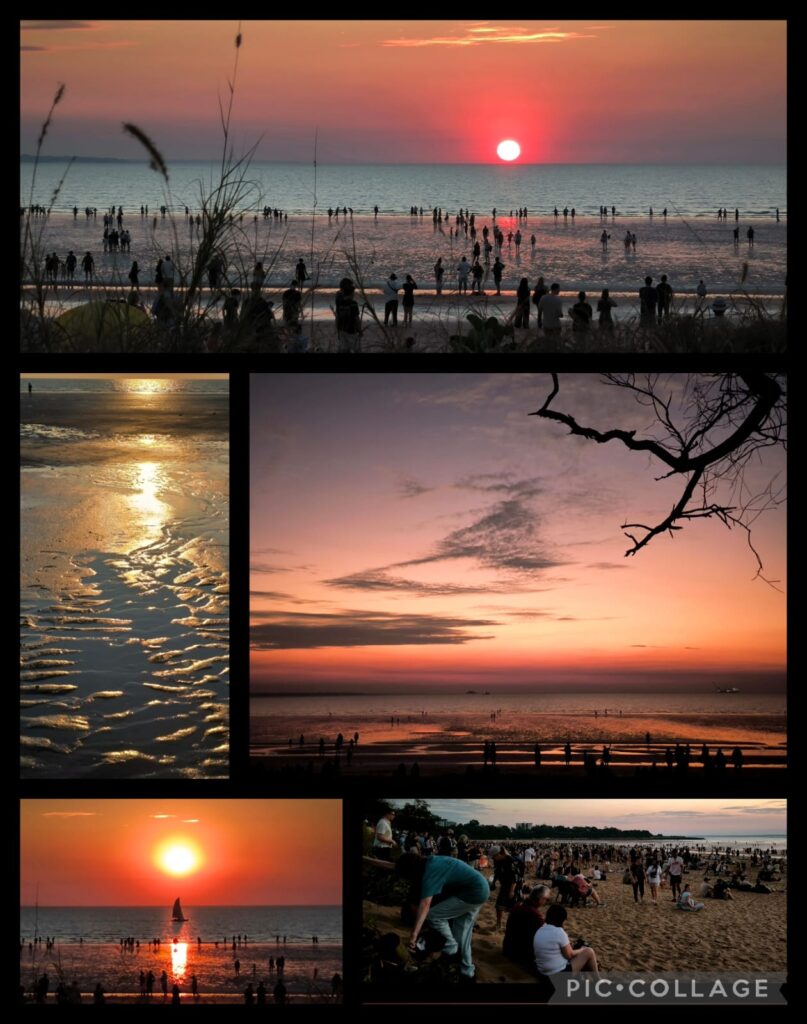
July 20 (Sunday). I had a lazy day spending most of the time in the hotel room writing travel notes and sorting out photos. In the late afternoon, we took a taxi to Mindil Beach to visit the Sunday market and watch sunset. It was atmospheric with hundreds of people watching the red sun dropping below the horizon. People clapped their hands at the end of the show! We also had a lovely dinner with roast duck and rice and were surprised by the high standard of the roast!
July 21. We had a 12-hour day trip to the Kakadu National Park with an early start at 6:15am! It is a long drive to reach our first stop at Ubirr where we saw rock art estimated to be 20,000 years old. We followed a trail and walked for about an hour to see rock art at two different sites. I thought I had been to this site before. After a quick lunch, we headed to the Yellow Water for a two-hour cruise where we saw plenty of wildlife: crocodiles, Jabiru, Wandering Whistle Duck, Ibis, White-bellied Sea Eagles, Jacuna etc. Kylie took a scenic flight after the cruise as well. We indeed had an exhausting day and arrived in Darwin after 7:30 pm.

